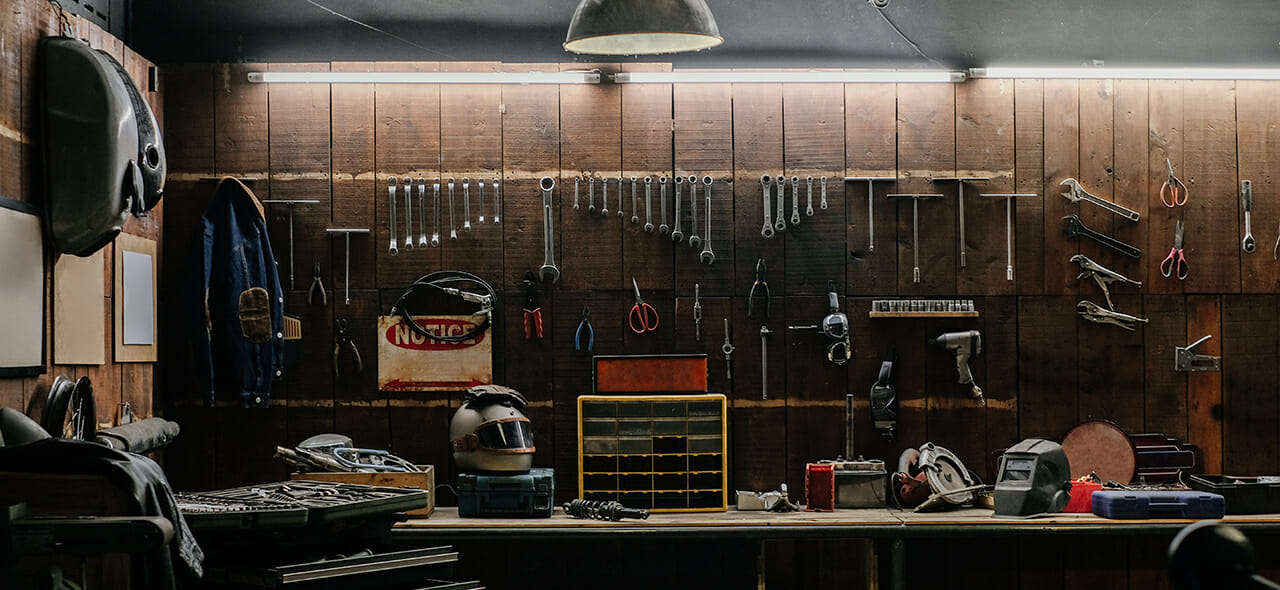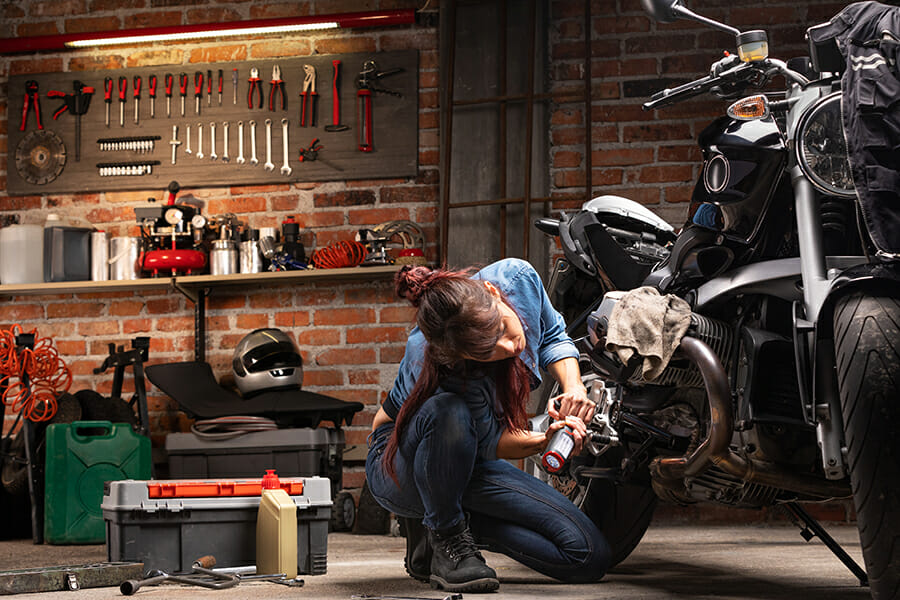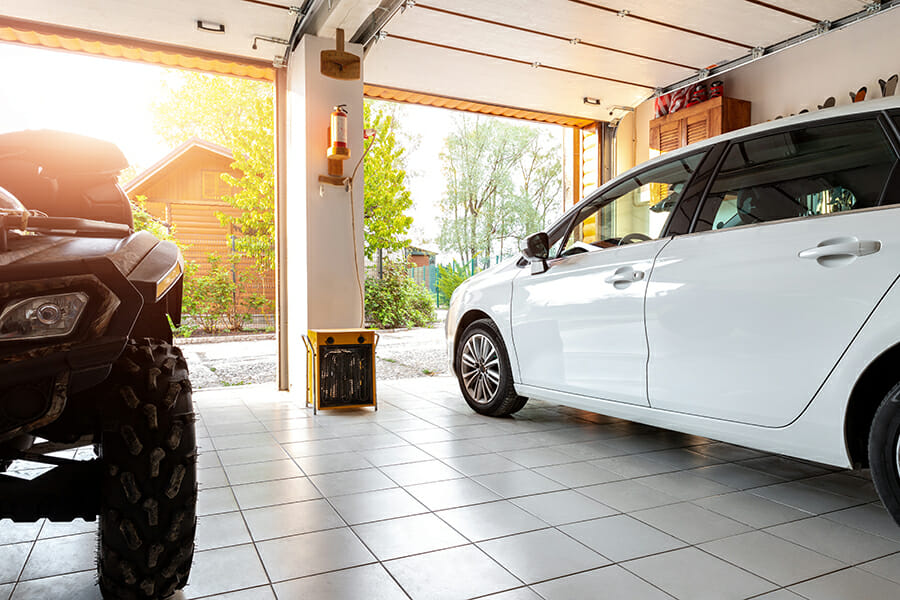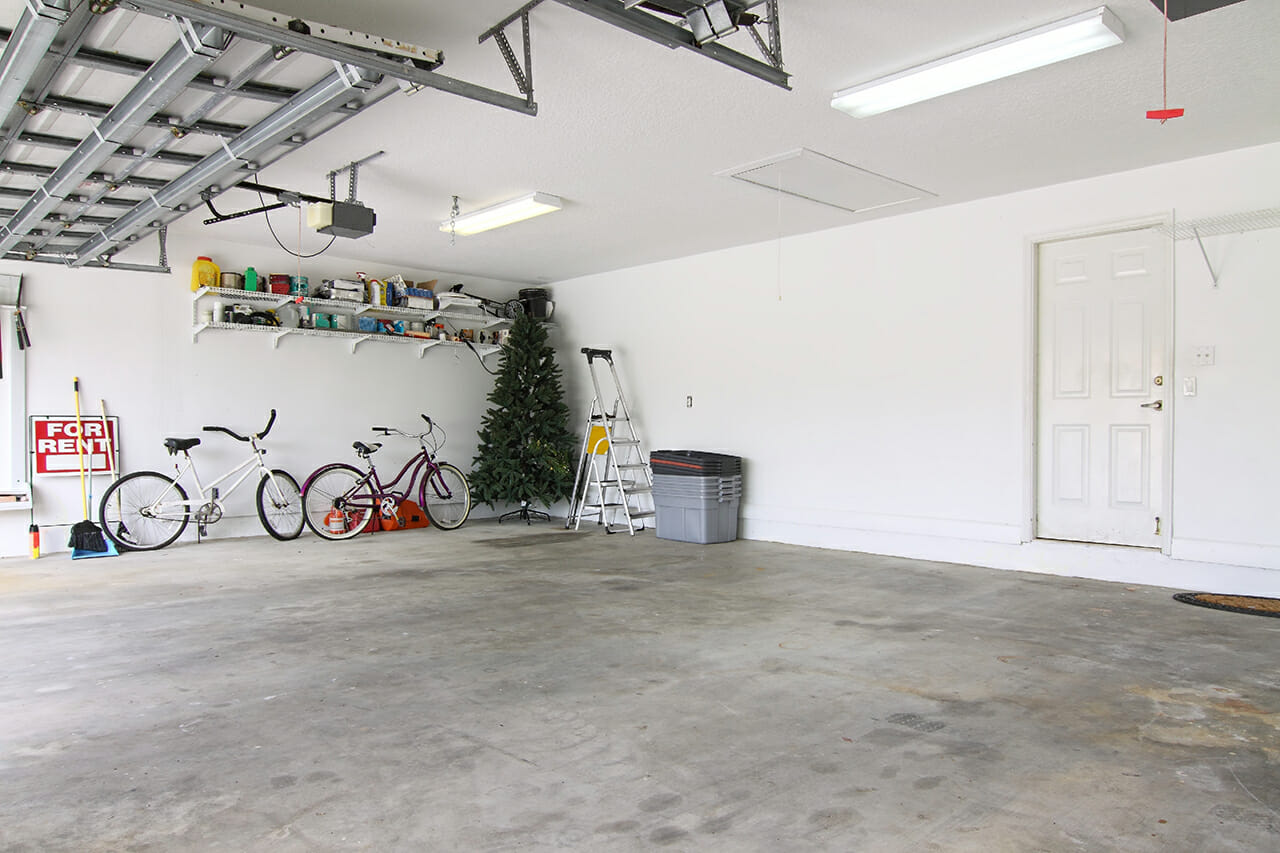
Electrician for backyard sheds and garages
What to think about for your home setup
If you’ve bought or built a shed to use as your workshop at home, you’ll no doubt want to get straight to work! But when you’re planning the electricals for your shed, you’ll need to think about:
- Connecting power to your shed
- Whether you need single phase or three phase power, and
- The right type of lighting for a home shed, and
- Custom equipment installation (whether that’s for a hoist, welder, lathes, or other equipment)
It will typically cost around $1,500 to $4,000 to set up electrical work for a residential shed.

Running wiring to the shed
You’ll have two choices: above ground or below ground. Each has its pros and cons.
Below ground cabling
The downside of below ground cabling is, of course, that you’ll need to have a trench dug! You may wish to hand-dig a trench, or if you’re dealing with a longer distance, it can be more efficient to use a machine.
Your electrician can do this installation for you, or you can organise this aspect yourself to save costs. It’s best to chat to your electrician first to ensure the correct depth and proximity to your switchboard.
The upside of below ground cabling is that, once it’s done, it will be out of the way and ready to operate trouble-free.
Contact us any time
We’ll get back to you as soon as possible.
Above ground cabling
If you choose an above ground cable, it will need to be enclosed in a conduit for protection, and supported so that it isn’t under any mechanical pressure.
How the cable is set up between the buildings depends on how far your shed is from your home. For example, if your new shed is a metre or less from the house, a simple iron bracket between the two buildings is fine, and the conduit is fixed to this.
If you’re dealing with a longer distance (such as if you’re on acreage and the shed is a considerable distance away from your home), you may need to have a catenary wire between the buildings on mechanically strong brackets.
On the downside, setting up these fittings on both buildings comes with an additional cost – and you’ll have to live with the reality of having an overhead cable to watch out for when moving vehicles or maintaining your property.
Be aware of voltage drop. If your shed is a long distance from your house or switchboard, your electrician will also need to install the correct sized cable from your house to the shed. Otherwise, voltage drop can mean equipment may be damaged if it doesn’t get the voltage it was designed for.

Should you choose single phase or three phase power for your shed?
In many cases, the ordinary household single phase power will be fine. The standard single phase (15 Amp) power will easily enable you to run a small welder, lathe, air compressor, drill and the like. That’s especially the case for your home workshop, where you’ll likely only be using one piece of equipment at a time.
On the other hand, if you’ll be using a large welder or have a vehicle hoist in your shed, then you may want to have 3 phase power wired in by your electrician.
Will you need to upgrade your switchboard for a shed?
It’s unusual to need a switchboard upgrade, since in most cases the ordinary household power or light circuit will be fine. But if you’re installing a three phase power circuit, then the switchboard may need to be upgraded.
Lighting for home sheds
You can use fluorescents, or if you really want to “do it right”, think about using super bright LED high bay lights.
You may also wish to have moveable lights for close-up work, so think about this when planning for power points so you can minimise the number of leads on the floor.
Another option to keep in mind is having power outlets hanging from the ceiling, which can then be used for moveable work lights. This can also be a good solution if you have a piece of equipment such as a bandsaw that is stored at the side against a wall, but wheeled out to the centre of the work area when being used.

Think about safety with home shed electrics
Earthing and insulation must be correct. Your electrician will know if the cables can be run in conduit or if a suitable cable type is correct for the job. So when wiring your shed, your electrician must ensure that there is appropriate segregation between electricity and the metal shed. And as well as cabling, this also includes power points, which must be installed correctly and safely.
Make sure your electrician installs power points near the bench or where equipment is going to be used. You don’t want to be tripping over cables as you use your shed!
Data connection to your residential shed
In some cases, while your home Wi-Fi is strong in the garden, the shed will act like a Faraday Cage and stop the Wi-Fi signal from your home. In that case, you may want to install data cabling along with your power so you can have full internet connectivity for your man cave. Make sure you plan ahead and think about running conduits under pathways or slabs.
Contact Jaric Electrical for home shed lighting
For an obligation-free quote call Jaric Electrical on 1300 452 742 or get in touch with us online.
Contact Jaric Electrical for your backyard shed or garage
If your home shed could do with new lights, contact Jaric Electrical. We know you’re busy, so when you book your service with us we’ll commit to a 2 hour timeframe that lets you get on with your day.
For an obligation-free quote call Jaric Electrical on 1300 452 742 or get in touch with us online.
![JARIC [P] RED_RVSE Air and Electrics](https://jaricgroup.com.au/wp-content/uploads/2021/01/JARIC-P-RED_RVSE-Air-and-Electrics.png)


